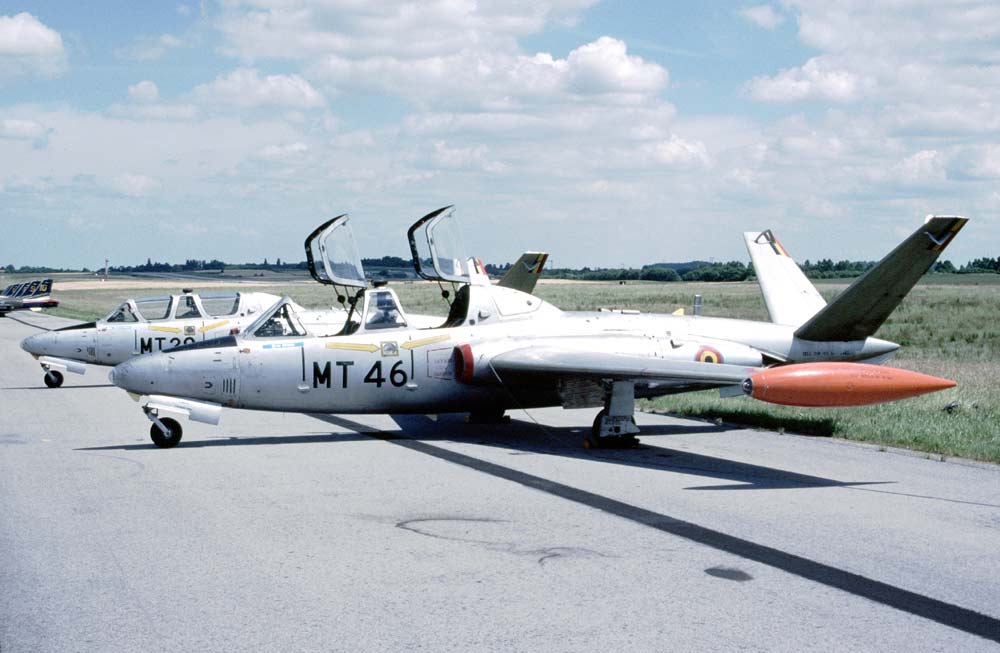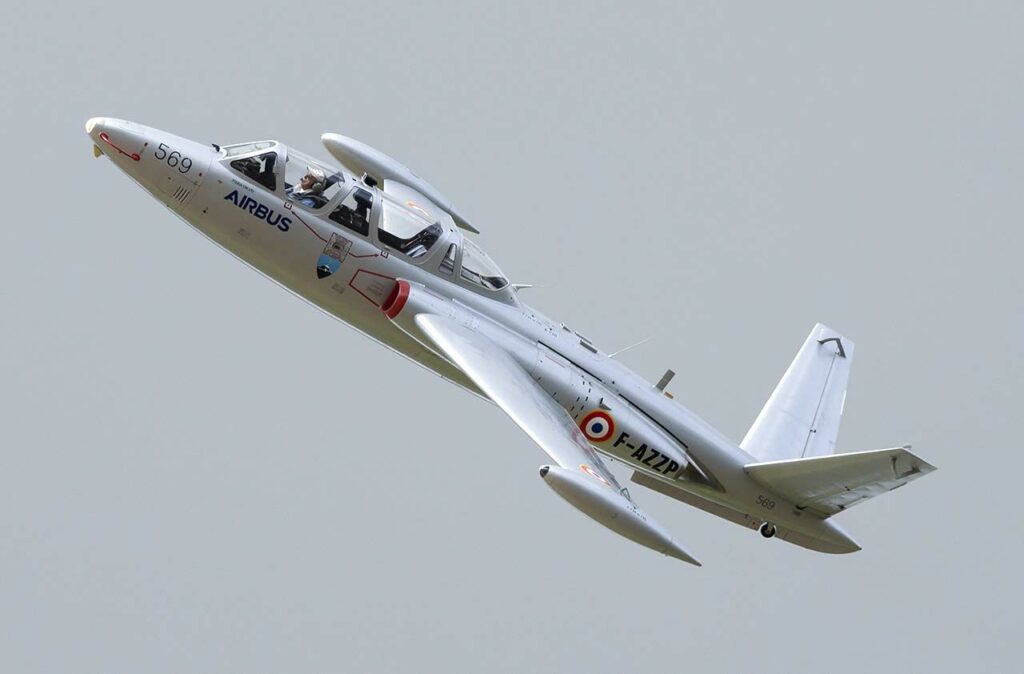The Fouga CM.170 Magister is a French two-seat jet trainer aircraft, known for its distinctive V-tail and light attack capabilities.
In brief
The Fouga CM.170 Magister is a French twin-jet military trainer aircraft developed in the 1950s. Powered by two Turbomeca Marboré IIA turbojets, each producing 880 lb of thrust, the Magister has a maximum speed of 444 mph, a service ceiling of 36,090 ft, and a range of 575 nm. With a wingspan of 12.15 m and a length of 10.06 m, the aircraft features a distinctive butterfly tail configuration. It can be armed with two 7.5 mm machine guns in the nose and has provisions for carrying bombs and rockets on underwing hardpoints. The Magister’s design focuses on simplicity and ease of operation, making it an effective training aircraft.
The Fouga CM.170 Magister is a significant aircraft in the history of military aviation, serving as a primary trainer for several air forces worldwide. Its unique design and capabilities made it a popular choice for basic and intermediate pilot training.

History of the Development of the Fouga CM.170 Magister
Developed in the early 1950s by the French aircraft manufacturer Établissements Fouga & Cie, the Fouga CM.170 Magister was initially designed as a basic and intermediate trainer aircraft. The first prototype flew on July 23, 1952, and the aircraft quickly gained favor with the French Air Force due to its performance and handling characteristics. The Magister was also selected by several other air forces and was produced under license in West Germany, Finland, and Israel.
The Fouga Magister’s development was influenced by the post-World War II aviation advancements and the growing need for jet-powered trainers to prepare pilots for increasingly sophisticated fighter aircraft. The Magister’s design included a distinctive butterfly tail, which provided improved aerodynamics at higher speeds. By 1960, over 350 Magisters had entered service with various operators, and production in France reached a rate of five aircraft per month.
Design of the Fouga CM.170 Magister
The Fouga CM.170 Magister is characterized by its compact, tandem-seat configuration and high-performance capabilities akin to larger, more powerful aircraft. The butterfly tail configuration, with a conventional tail tested but found aerodynamically inferior at higher speeds, became one of the aircraft’s most distinctive features. A keel fitted under the rear fuselage reduced the negative dihedral effect of the butterfly tail during rudder applications.
The Magister was powered by a pair of Turbomeca Marboré turbojet engines, placed close to the centerline, producing minimal asymmetric thrust, a valuable safety feature for a trainer aircraft. The design emphasized simplicity of operation, with above-average accessibility to engines and onboard equipment for servicing. The Magister’s landing gear was suitable for operations from austere grass airstrips.
Performance of the Fouga CM.170 Magister
The Fouga CM.170 Magister’s performance was commendable for its time. The twin Turbomeca Marboré IIA turbojets provided a maximum speed of 444 mph, a service ceiling of 36,090 ft, and a range of 575 nm. The aircraft’s rate of climb was 1,020 m/min, and its high-performance characteristics made it suitable for both basic and intermediate training roles. The Magister’s performance was considered superior to the British-built BAC Jet Provost and comparable to the Fokker S.14 Machtrainer.
Variants of the Fouga CM.170 Magister
The Fouga CM.170 Magister was produced in several variants, including the CM-170-1 Magister, the initial production model, and the CM-170-2 Super Magister, an upgraded version with more powerful Marboré IV engines. Other variants included the CM-171 Makula, a single prototype engine testbed, and the CM-173 Super Magisters, fitted with Marboré Super VI turbojets. The Fouga 90 was a modernized version with upgraded avionics, and the IAI Tzukit was an Israeli variant with light attack capabilities.

Military use and combat of the Fouga CM.170 Magister
The Fouga CM.170 Magister saw extensive military use and participated in several conflicts. During the Six Day War in 1967, Magisters in the Israeli Air Force were used in combat, although with limited success. The aircraft was operated by numerous air forces, including Belgium, Israel, Finland, and Germany, and saw service in various roles, from training to light attack missions.
The Fouga CM.170 Magister stands as a notable aircraft in the history of military aviation. Its unique design, reliability, and versatility made it a popular choice for many air forces around the world. While primarily used as a trainer, the Magister’s light attack capabilities demonstrated its adaptability. Its legacy continues in the aviation community, with many Magisters now in private hands as warbirds.
Back to the Fighter Jet section.